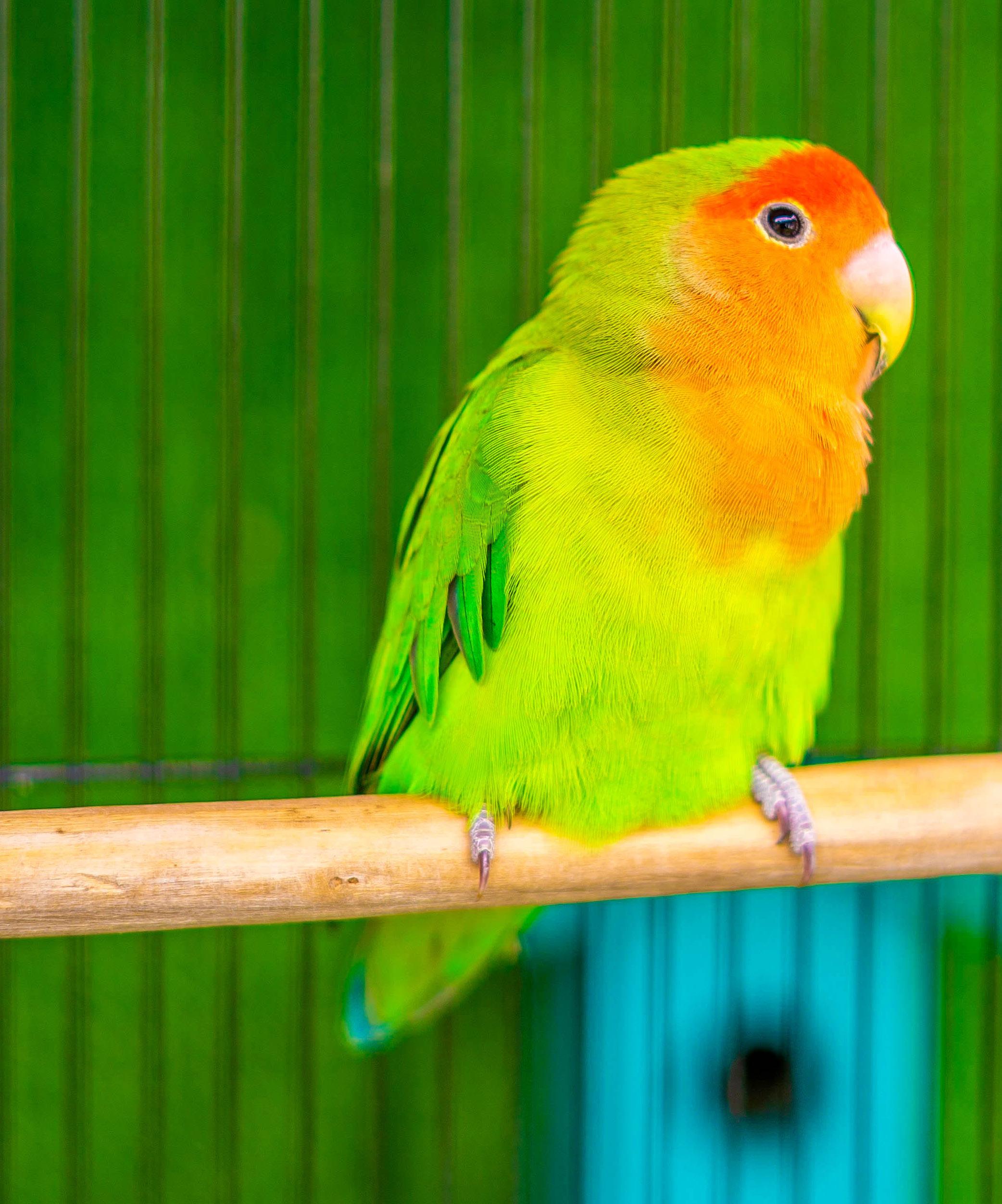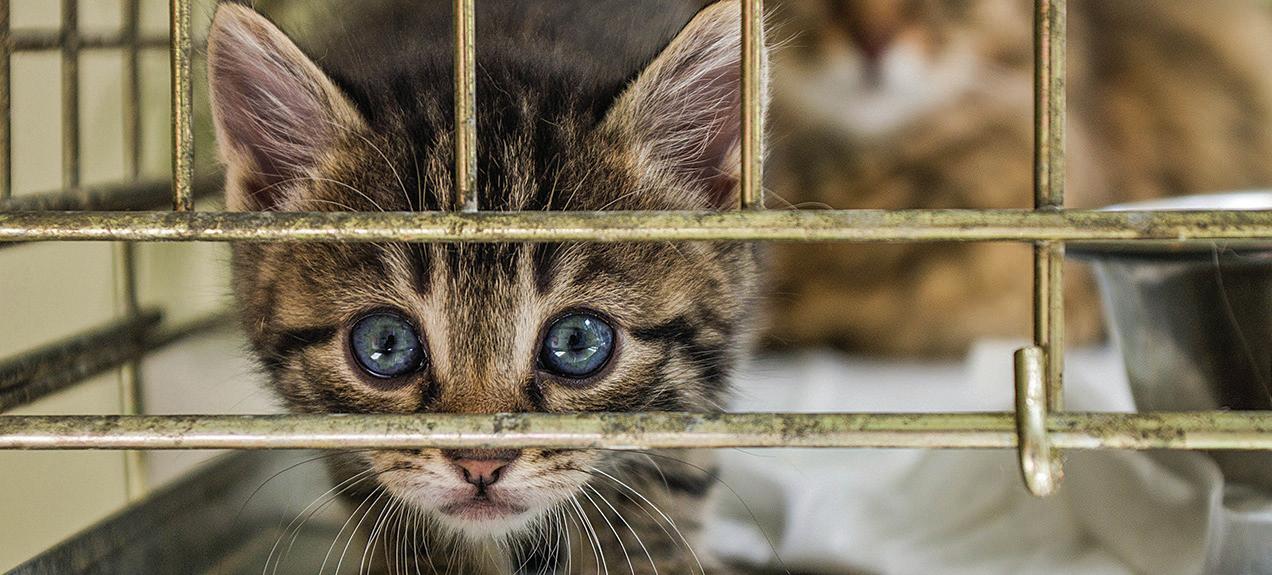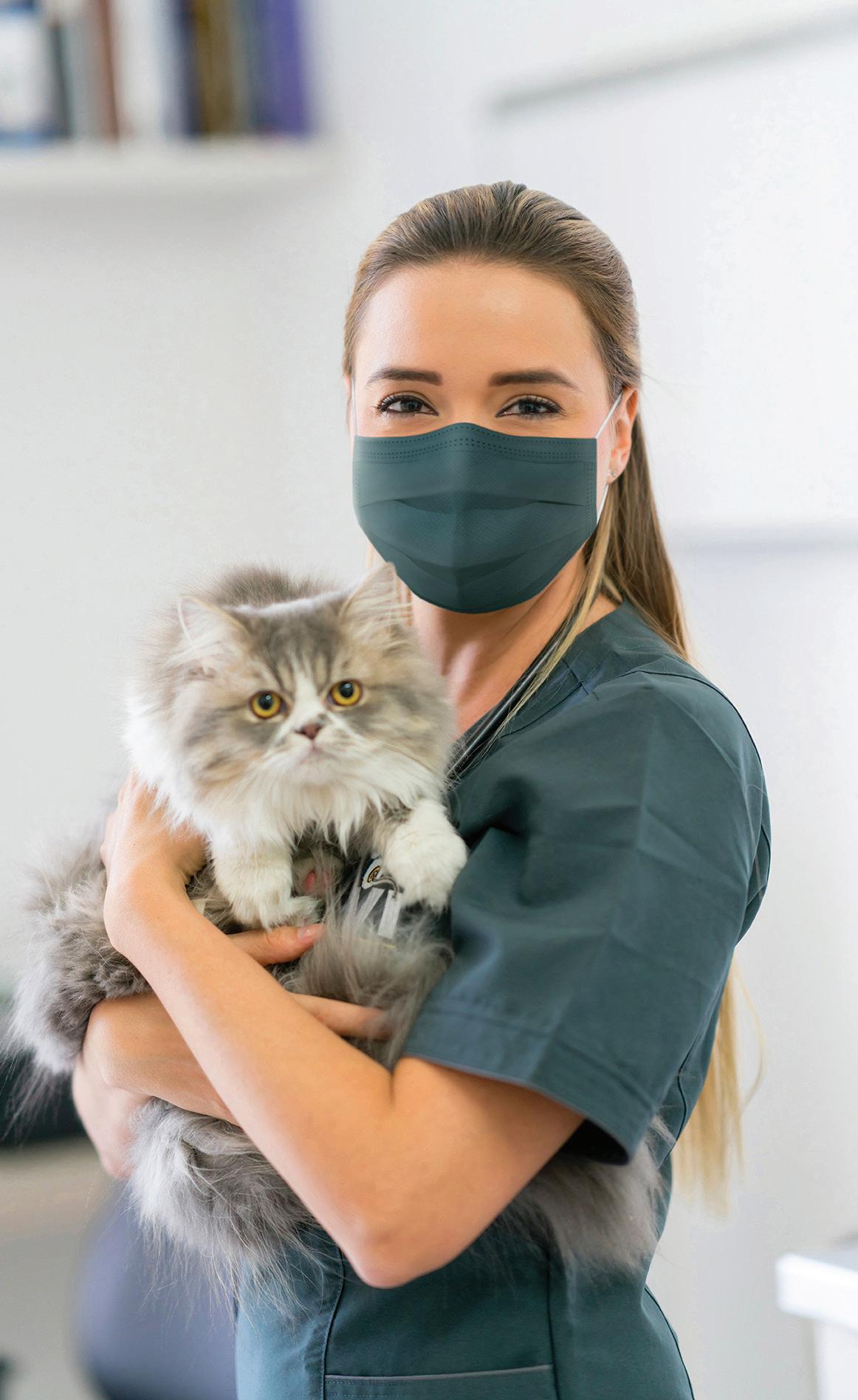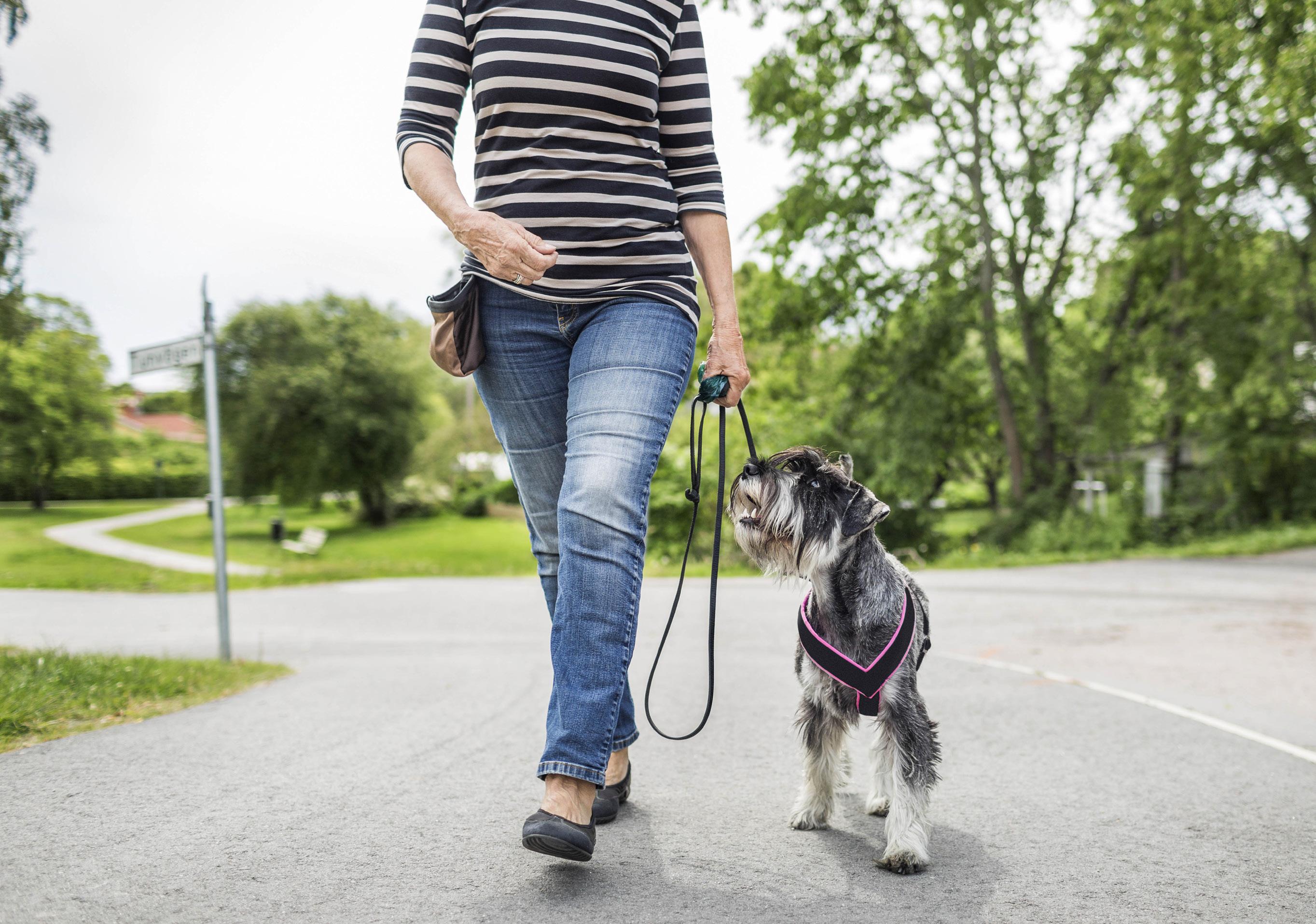PETS All About









(Metro Creative Connection) - Getting a pet can seem like a fabulous idea in the heat of the moment when puppy dog eyes are blinking back from behind the bars of a cage or when a cuddly hamster peeks out from his hiding spot and makes kids swoon. Even though pets can make wonderful companions, approximately 6.3 million pets enter United States shelters nationwide every year, according to the ASPCA. In addition, around 80,000 cats and dogs entered shelters in Canada in 2021, according to Humane Canada. Such figures suggest companion animals are not suitable to every animal lover’s lifestyle.
Though many shelter pets find new homes, one of the ways to reduce the number of surrendered pets is to avoid impulse decisions. A careful consideration of lifestyle can ensure potential pet owners find an animal they’re fully capable of caring for.

• Consider time constraints. People can be honest about their schedules and how pets can fit in. A busy executive who works 12-hour days and
travels often may not be able to have a high-maintenance pet. Animals that do not require much interaction, such as aquarium fish or reptiles, may be better fits.
• Consider your interests. It can be beneficial to find a pet who aligns with one’s interests and hobbies, as this can make the connection
even stronger. A person who likes to hike may benefit from a pet that can handle long periods traversing the great outdoors.
• Factor in budget. Pets can be expensive. The American Kennel Club says the lifetime costs of dog ownership can range from $14,480 to $15,051 depending on the size of the dog (which relates to life expectancy). Exotic pets, such as macaws, may have large expenses for specialty vet care and cages. If money is tight, a pet that has minimal expenses might be a smarter move.
• Assess your personal health. Someone with allergies may have to avoid furry pets because dander and fur may trigger allergic reactions. Mobility issues can make it challenging for someone to walk a dog every day, making a cat who is relatively independent a more practical choice.
Lifestyle should be a major consideration when deciding if the time is right to introduce a pet into a home. A pet who aligns with the household dynamic can increase the likelihood of a successful pet-owner relationship.

(Metro Creative Connection) - Lyme disease is a bacterial illness often spread through the bite of the black-legged tick. A bacterium known as borrelia burgdorferi is carried inside a tick and can be transmitted from the tick’s saliva into the bloodstream of an animal host, whether that host be a person, pet or wild animal.
Though it is often transmitted to humans, Lyme disease is less common in dogs, even after they’ve been bitten by an infected tick. A report published in the Journal of Veterinary Medicine found Lyme disease causes clinical symptoms in only 5 percent of dogs who are affected with the disease. Lameness, joint swelling, arthritis, depression, weight loss, and other appetite issues are noted as the most common symptoms.
No matter how large or small the risk for dogs acquiring Lyme disease may be, pet owners can employ various measures to prevent the illness from affecting their companion animals.
• Use a tick preventative. The Centers for Disease Control and Prevention say that pet owners should speak with their veterinarians about the best tick prevention products for their dogs. Most are broken down into two classes: topical and oral. Topical tick preventatives are liquids placed on the skin or chemicals embedded in special collars. Oral medications are consumed and absorbed by the pet. There are pros and cons to both types, which warrants an honest discussion with a pet professional.
• Stick to trails. When walking dogs, keep
to clearly identified and cleared trails and try to avoid tick-infested spots. Ticks are found in sandy, wooded and grassy areas. They find their way onto animals by detecting approaching motion and then crawling or dropping on to people or animals. Also, keep home yards mowed to cut down on tall grasses where ticks can hide.
• Physically remove ticks. Inspect dogs when they come inside from the yard or after walks in parks and elsewhere. Remove any ticks that you can find. Some may be quite small and hard to detect. Carefully remove embedded ticks to keep the tick’s mouth parts intact.
• Vaccinate against Lyme disease. Veterinarians offer Lyme disease vaccinations for dogs that are administered yearly. Should an infected tick
bite the dog, a vaccinated animal will be less likely to contract Lyme disease. VCA Animal Hospitals says vaccination is recommended for pets who live in endemic areas or travel to areas where Lyme disease is prevalent.
• Schedule wellness visits that include Lyme testing. Annual vaccines are necessary to maintain immunity to Lyme disease. Vets often will conduct blood tests to check for the presence of Lyme disease and other tick-borne illnesses during wellness visits. Should Lyme disease be present, an antibiotic, typically doxycycline, will be prescribed.
Lyme disease affects all types of animals. To keep dogs safe, pet owners can embrace a mix of preventative measures, including physical inspection, lifestyle changes and vaccination.
(Metro Creative Connection) - Dogs, particularly puppies, can be full of boundless energy. Channeling that energy into exercise with long walks or play sessions can help stem dogs’ propensity to get into trouble around the house as they burn off extra adrenaline. Pets who don’t have an energy outlet may chew off-limits objects or get into other mischief.
According to the American Kennel Club, the amount of exercise a dog needs depends on the animal’s age and breed. For example, border collies or Siberian huskies may require much more exercise than English bulldogs, simply because the former are working breeds. Pet owners with large backyards often find those outdoor spots are ideal for when their dogs get the “zoomies,” something that tends to be a daily occurrence. Letting their dogs run around yards, whether on their own or chasing tossed tennis balls, is an ideal way to provide exercise and tire out pups. In such scenarios, it’s vital that pups have a dog-friendly yard in which to play.
An expanse of grass is the perfect place to frolic or enjoy some sunbathing — for people or pets. But contact with chemically treated lawns can cause a number of health issues for dogs, such as allergies or intestinal upset.
Switching to native grasses can reduce the need to use chemicals to get lush lawns. When supplementation is needed, homeowners can switch to organic products or natural compost as safer alternatives than chemical-based products.
Off-leash running and bounding through the yard will make any dog smile. However, a fence is a must-have to ensure a dog doesn’t become an escape artist. Be sure the fence is high enough so that the pup cannot jump over it. Burying chicken wire in the dirt beneath the lower edge of the fence also can help prevent dogs who like to dig from exiting by crawling underneath the fence.
Consider installing a lock on the fence gate so that no one can wander in and surprise the dog, which may startle the animal and prompt it to defend the property. A lock also helps prevent dog theft.
Maintaining a clean yard also is key to safety. Inspect the yard regularly to make sure nothing is around that can prove harmful, whether it’s poison ivy, felled branches or broken fence panels. Also, keep shrubs and grass trimmed to reduce flea and tick populations on the property.
Certain plants can be dangerous if they’re consumed by curious pups. Chrysanthemums, peonies, irises, and hydrangeas are some plants that can be poisonous. For a full list of poisonous plants, visit the ASPCA website (aspca.org).
Dogs can spend some unattended time in the yard, but check in from time to time. Should wildlife get into the yard, dogs may get hurt by tussles or bites. Birds of prey, such as owls, hawks and even vultures, may attack small dogs in a yard. According to Pat Silvosky, director of the Milford Nature Center in Kansas, some birds can be territorial. While they might not view a dog as an easy meal, they could swoop down and attack to defend territory. The same may occur with other wild animals.
A dog-friendly yard may require a little effort to create, but it’s worth a little sweat equity to keep pups safe.

(Metro Creative Connection) - House cats make peculiar, interesting and lovable companions. Cat owners often go to great lengths to make their furry feline friends feel good, and some may allow cats to roam outside. Though such a decision may be well-intentioned, it could lead to some troubling consequences.
The animal welfare organization American Humane notes that allowing indoor cats outside could jeopardize their health and safety in a number of ways.
Cats allowed to venture outside may encounter feral cats, which American Humane notes can be carriers of disease. A 2014 study published in the journal Zoonoses and Public Health estimated that between 60 and 100 million feral cats live in the United States, and that figure could be even higher today. The animal rights organization PETA notes that contagious dis-
eases such as herpes viral conjunctivitis, feline AIDS, leukemia, and infectious peritonitis are common in feral cats. Indoor and outdoor cats who catch these diseases could suffer serious consequences, including death.

Infection with parasites is another potential outcome for indoor cats allowed outdoors. Though American Humane notes parasites are not usually life-threatening for cats, they can cause a multitude of symptoms, including scratching, skin infections, vomiting, and diarrhea. Fleas, ticks, ear mites, gastrointestinal worms, and ringworm, which can be passed on to people in certain situations, are just some of the parasites cats can pick up if allowed outside.
Safety is another factor cat owners must consider as they ponder whether or not to let their cats outside. American Human disputes the notion that cats have an innate instinct to
avoid busy streets. Reliable estimates regarding how many cats are struck and killed by cars each year are hard to come by, but it bears noting that cats’ small stature makes them hard for motorists to see, which could make them more vulnerable to being hit by cars than dogs. Vehicles are not the only outdoor safety threat to cats. Loose dogs and wild animals, including raccoons and foxes, may hunt cats allowed outdoors. Cats also could ingest toxins such as antifreeze, which has a pleasant taste but could prove fatal for cats. And though the image of firefighters saving cats from high perches in trees is common, trees are a significant threat to cat safety. Curious cats may climb trees and then be afraid to come down or struggle to come down safely, potentially leading to severe injuries.
Though owners may allow cats outdoors as an act of kindness, such a decision could place these pets in serious jeopardy.
(Metro Creative Connection) - Pets make wonderful additions to a home and family. One of the best things about welcoming a new pet into a home is that no two pets are the same, which means pet owners will get an entirely unique experience each time they bring a new animal into their home.
Birds are among the most unique pets. Brightly colored feathers give pet birds their own distinctive look, but there’s more to birds than just vivid plumage. Individuals considering adopting or purchasing a pet bird can consider these needs and character traits commonly associated with birds so they have a good idea of what to expect.

• Birds have unique veterinary needs. The American Veterinary Medical Foundation notes that pet birds have special veterinary needs, and recognition of those needs can help prospective bird owners determine if a pet bird is for them. The Association of Avian Veterinarians (aav.org) can help individuals find an avian veterinarian in their area, and such professionals can discuss the unique veterinary needs of various bird species. Familiarity with those needs can ensure individuals pick the right bird for their lifestyles.
• Most pet birds are diurnal species. The AAV notes that most pet birds awake at dawn and settle in to sleep at dusk. Prospective bird owners should be comfortable with and willing and able to accommodate that sleep-wake cycle. If they can’t accommodate that, a pet bird could suffer as a result. The AAV reports that artificially long days resulting from household lights or televisions can cause sleep deprivation in birds and compromise the bird’s health. Before buying a pet bird, prospective owners should recognize that birds are generally best when they get between 10 and 12 hours of sleep per night.
• Birds need exercise. Pet birds live well in a cage, but that does not mean they don’t need exercise. The AAV notes that birds need exercise to maintain their
cardiovascular and respiratory systems. The AVMA recommends choosing a cage that affords birds space to climb, walk around and fly. Some cages may restrict a bird’s ability to fly. In such instances, the AVMA urges bird owners to provide supervised access to an adequately sized exercise area outside of the cage. The AAV notes that bird owners should be conscious of the potential for trauma if exercise rooms feature ceiling fans, mirrors or windows, which birds can fly into. If possible, find a room where this risk is minimal. Provide access to the exercise room for several hours each day if the cage does not feature ample room for the bird
to fly.
• Birds can be trained. Individuals may associate pet training with dogs, but birds, and their owners, can benefit from training, too. The AAV recommends reward-based training over punishment-based training and notes that some good resources for bird training include Goodbirdinc.com and the International Association of Avian Trainers and Educators (iaate. org.)
Birds make for wonderful pets. Recognition of their unique traits and needs can help prospective bird owners understand what bird ownership will be like.
(Metro Creative Connection) - No pet owner wants to imagine their furry friend falling victim to illness, but companion animals are not impervious to disease. In fact, various ailments typically associated with humans can affect pets as well. Diabetes is one condition that cat owners may want to learn about. According to the Cornell Feline Health Center, between 0.2 and 1 percent of cats will be diagnosed with diabetes during their lifetime. Though that’s a small percentage, cat owners can still make an effort to understand feline diabetes so they can spot its signs and help their cats avoid any potential risk factors for the disease.
What is feline diabetes?
Much like their human owners, cats need sugar (glucose) for energy. Glucose in the blood needs insulin, which is a hormone the pancreas produces. The CFHC notes that insulin is used to “unlock” the door to cells. Insulin attaches to cells and indicates the right time to absorb glucose, which is used as fuel and leads to lower glucose levels in the blood. Type 1 diabetes occurs when insulin production is insufficient, leading to high concentrations of glucose in the blood. Type 2 diabetes occurs when glucose levels are elevated because the body’s cells are not responding appropriately to insulin. The CFHC reports that, in the case of both type 1 and type 2 diabetes, cells cannot access the nutrients they need because insulin cannot transport the sugar from the bloodstream into the cells that need it.
What are the risk factors for feline diabetes?
Some of the risk factors for diabetes in humans affect cats’ risk for the disease as well. For
example, obesity and physical activity are two risk factors for feline diabetes. Being obese and living a sedentary lifestyle increases humans’ risk for diabetes as well. The link between obesity and feline diabetes is so significant that the CFHC indicates obese cats are up to four times more likely to develop diabetes than ideal weight cats.
But those are not the only two risk factors for feline diabetes. The CFHC notes that the use of glucocorticoids, a type of steroid sometimes used to treat feline asthma, could increase the risk for feline diabetes. In addition, PetMD reports that certain breeds of cats have been found to get diabetes more than others, which indicates that genetics could play a role as well.
What are some symptoms of feline diabetes?
Weight loss and increased thirst and urination are two of the more common signs of feline diabetes reported by cat owners. The weight loss occurs even when cats exhibit a strong appetite. Though the CFHC indicates this is rare, in some instances cats with feline diabetes may experience nerve damage in the hind limbs. Though this isn’t painful, it may compel cats to walk or stand with their hocks on or close the ground.
Can feline diabetes be treated?
The good news regarding feline diabetes is that the prognosis is good when the right steps are taken to manage the condition at home. A veterinarian may recommend a combination of insulin therapy and dietary changes. Insulin therapy typically involves insulin injections, but the CFHC notes that syringe sizes are typically so small that cats tolerate the injections quite well.
Feline diabetes may be something cat owners
have never considered. The condition can affect any cat, and learning its ins and outs can ensure cat owners know how to respond if cats begin to exhibit symptoms of the disease.


(Metro Creative Connection) - Animal cruelty occurs in various scenarios, some of which are unintentional. In the case of dog-fighting rings or overbreeding of animals, abuse is intentional. However, sometimes when people hoard animals, they may do so with good intentions, even if overcrowding and unhygienic situations can escalate quickly.
Animals cannot speak for themselves. That means they must rely on others to act as their advocates. In doing so, people can get animals the help they need and deserve.
If one suspects a case of animal cruelty, the ASPCA suggests first trying to gather as much evidence as possible. Consider taking video or photographs in public areas (if a dog is chained up outside all the time, for example). Individuals may be able to use non-emergency police or services hotlines (such as 311 in New York City) to get help and report abuse. Individuals also can reach out to a local organization responsible for enforcing animal anti-cruelty codes. This may differ depending on where one lives. For instance,
the organization could be a local humane organization, animal control agency, taxpayer-funded animal shelter, or a police precinct. Individuals unsure of where to turn can speak to a local veterinarian for advice. Veterinarians also may be
willing to join in the process.
If a crime is in process, call emergency services immediately and police will respond to the scene. Reporting animal cruelty can help save the lives of helpless victims.
(Metro Creative Connection) - Walking a dog on a leash is required by law in many towns and cities. Leashing a dog prevents the animal from trespassing on neighbor’s property and keeps it from jumping on people or other animals.

A leashed dog can be restrained from sniffing the waste of other animals, which may help curb the spread of diseases like distemper or parvo. Leashing also can reduce the propensity for the dog to run away from an owner and get lost.
Despite the benefits of walking dogs on a leash, some dogs are not too keen on the idea. Puppies may acclimate to it over time, but circumstances can make any dog want to escape a leash. The following are some issues that may arise and how to remedy them.
The vast assortment of collars and harnesses billed as “no pull” suggests the issue of dogs pulling on the leash is common. Dogs on leashes that are too long may be distracted and pull more readily. Start out with a short leash and
only allow a longer slack when the dog has exhibited an ability to walk diligently on the shorter leash.
Rather than punish bad behavior like pulling, many dog trainers recommend rewarding the good behavior, such as walking without pulling at your side. This praise can be delivered verbally and with plenty of treats.
Dogs may behave differently on a leash than they do when off them. Most dogs who lunge at passersby or bark or snarl may actually crave the attention of other companions but not have the social skills to engage in a proper meet and greet, according to the American Kennel Club. Should the dog be off-leash, he or she may not behave in the same way.
Lunging and other behaviors may stem from aggression, but it’s more likely a cause of fear, says the AKC. It’s a mentality marked by an “I’ll get that thing before it gets me” outlook designed to make the feared person, dog or object
go away. A leash also may cause frustration that the dog can’t get to a desired pet or person, and the animal loses emotional control. A trainer can help owners learn to distract the dog on the leash from others with high quality treats. Strategies to remove leash tension also can cut down on leash reactivity.
Dog owners can experiment with gear to make leash-walking go more smoothly. Traditional collars may put too much pressure on a dog’s throat, particularly those who pull. A harness can be a better option. Gentle leaders are a type of head gear that enables pet owners to redirect their dogs more readily. Because they resemble muzzles, some owners may hesitate to use them despite their efficacy. Front clip harnesses and correctional collars might help as well. Consult with a veterinarian or trainer for the best options.
It pays to invest some time teaching dogs to walk calmly on leashes.
Many people believe their timeshares cannot be canceled, but they often can be. Our founder and CEO, Chuck McDowell, has successfully fought in federal court for the right to help timeshare owners — like you — out of their “binding” agreements. Whether you were misled or pressured, you may have an easy exit.

• Start with a FREE consultation to discuss your needs.




• If we see that the circumstances of your agreement qualify you to exit the timeshare, you’ll be assigned a specialist to walk you through gathering documentation.
• Our Resolution Department then works quickly to have your timeshare and related fees permanently terminated.
We are able to help most timeshare owners that contact us. You could be one phone call away from complete peace of mind.
844-957-0824
Don’t think for another minute that you are stuck with this. What we do is help you cancel your timeshare along with all of the debt and fees associated with it.
I guarantee that if we take you on as a client and we don’t cancel your timeshare, you’ll pay nothing!
 Chuck McDowell, Founder & CEO
Chuck McDowell, Founder & CEO
